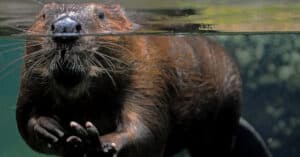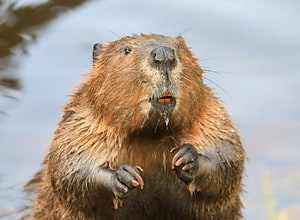
Do beavers really eat wood? These brown furry rodents with large teeth and a flat tail can often be shown gnawing on a tree. So you would think that they eat wood, but they chew on trees for a different purpose. Let’s take a look at what beavers eat.
How do beavers gather food?
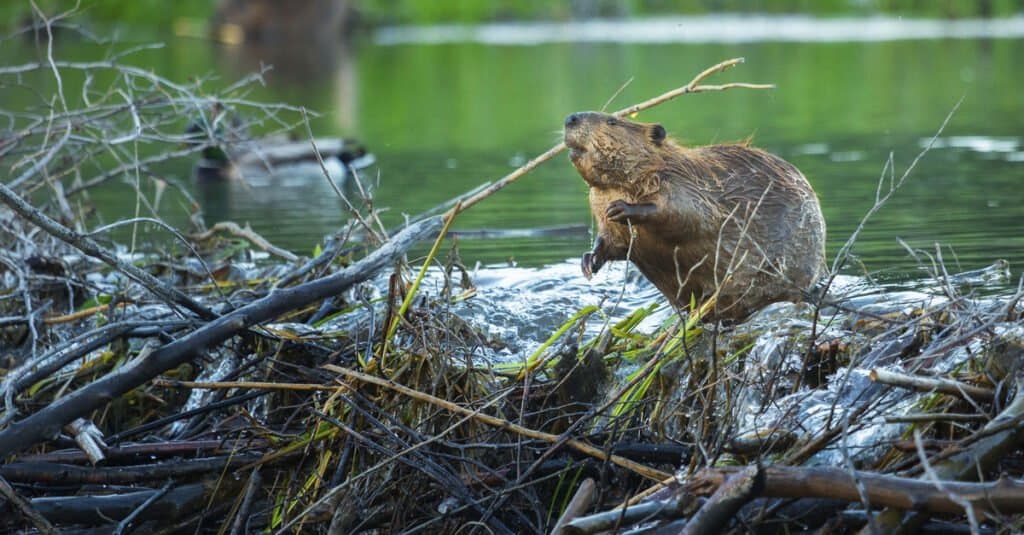
Like humans, beavers cut down trees to build their homes.
©Chase Dekker/Shutterstock.com
Timber! Beavers are not equipped to climb trees to reach the delicious green leaves. So they bring the food to them. They gnaw on trees with their large teeth until the tree falls. Then they have access to an all you can eat salad bar! Beavers also eat the bark from trees and the soft wood under the bark. But they don’t really eat the wood. They use the dead trees for their dams and as places for other vegetation to grow. They will gather this vegetation and store it in their lodges.
How do beavers eat?
If you watch a beaver eating a twig, they would hold it like a piece of corn-on-the cob, turning and nibbling it. They chew with their mouth closed, like humans, but their big teeth stick out.
What do beavers eat?
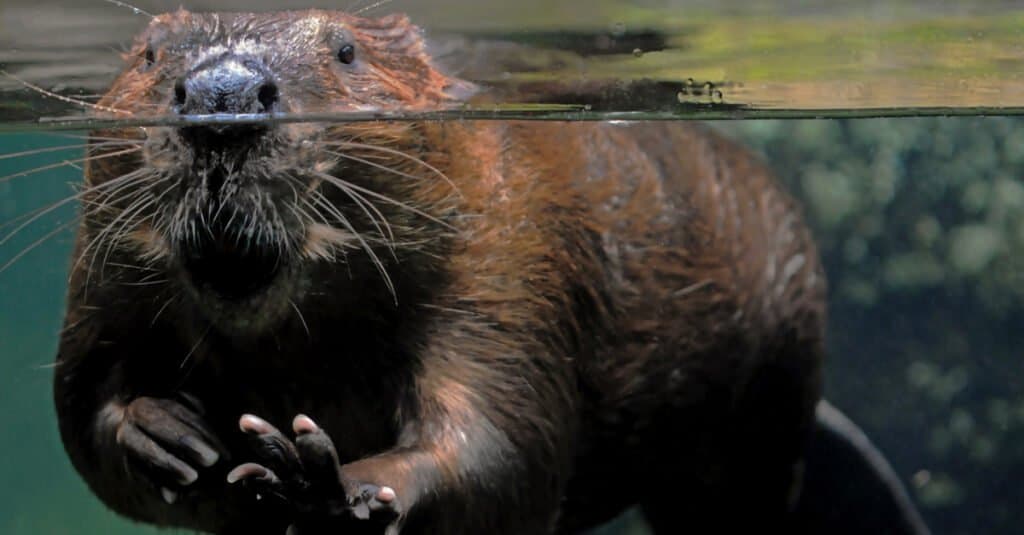
Beavers secrete a brown slime that smells like vanilla that is sometimes used in vanilla flavorings.
©karen crewe/Shutterstock.com
Beavers are herbivores and only eat plants and vegetation. They mostly eat the inner bark of trees along with the bark and leaves. They can eat shrubs, twigs, and apples as well. Because beavers spend a lot of time in the water they also enjoy aquatic plants like lilies, pondweed and cattails.
A complete list of what beavers eat:
- Inner bark
- Leaves
- Twigs
- Shrubs
- Aspen Trees
- Birch Trees
- Alder Trees
- Cottonwood Trees
- Willow Trees
- Aquatic plants
- Lillies
- Cattails
- Pondweed
How do beavers get food in the winter?
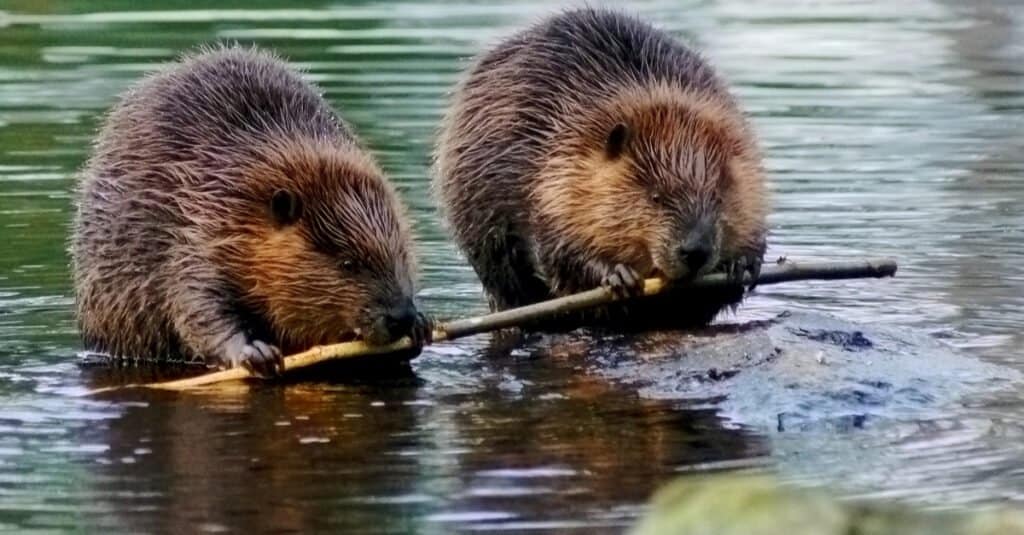
Two beavers chewing bark off a twig
©P Harstela/Shutterstock.com
It’s amazing how creative beavers are when it comes to storing food for the winter! Their lodges are built on the water and they spend the winter in their lodges. So in the fall, before the water freezes, they line the bottom of their lodge with fresh trees branches. When the temperatures dip below freezing the water freezes over top of the branches. When they need something to eat they swim out of their lodge and under the ice to find their branches! Clever!
Not cottonwood trees again! Beavers have a favorite kind of tree, they prefer aspen trees.
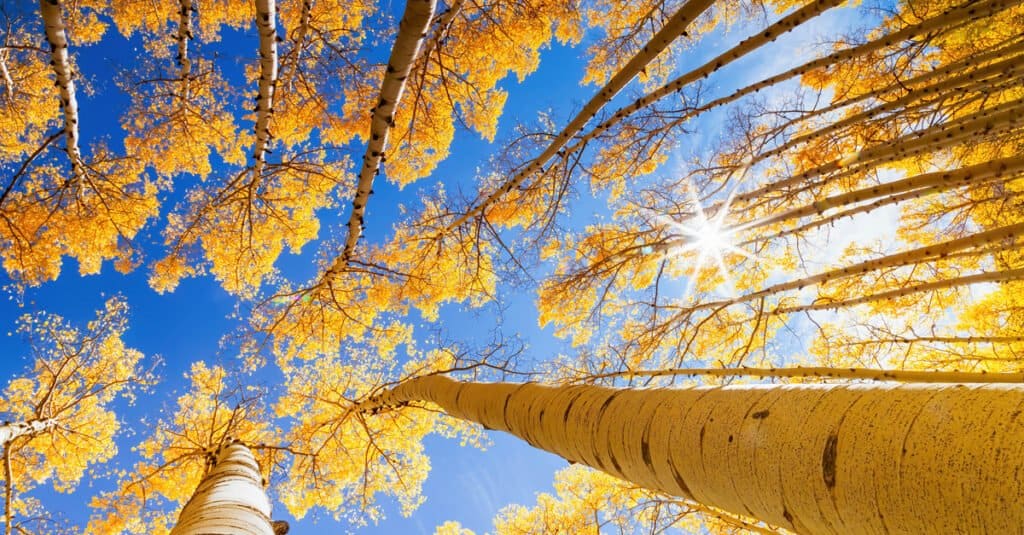
Aspen trees are a favorite trees for beavers
©Pritha_EasyArts/Shutterstock.com
Research shows that beaver’s favorite trees are aspen trees. Beavers make their lodges near trees that they prefer so they seek out locations that are near water and near aspen trees. They also will eat birch, alder, cottonwood and willow. They do not like coniferous trees like pine trees and spruce but if food is scarce they can eat and digest these.
Do baby beavers eat trees and leaves?
Not right away. Like many mammals their babies start out nursing their mother’s milk. For the first six-weeks they only have milk and then begin to add in other foods like leaves, bark and inner bark. Other beavers in the family bring food to the young beavers until they are old enough to venture out.
The photo featured at the top of this post is © P Harstela/Shutterstock.com
Thank you for reading! Have some feedback for us? Contact the AZ Animals editorial team.





